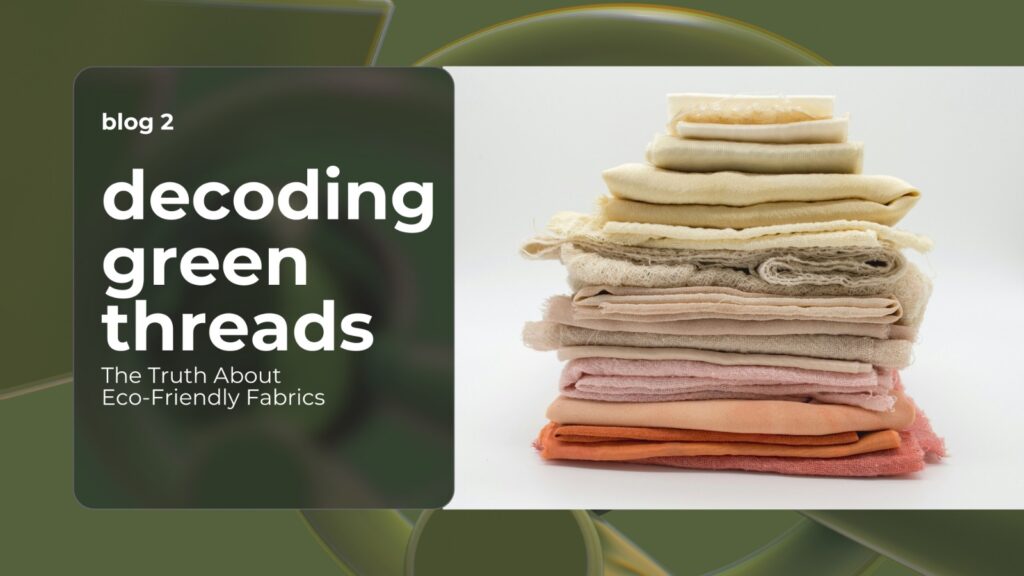
Decoding Green Threads: The Truth About Eco-Friendly Fabrics

Sustainable fashion is all the rage, but not all “eco-friendly” labels mean what they claim. The question is: what actually makes a fabric sustainable? Whether it’s recycled polyester or organic cotton, each fabric has its perks—and pitfalls.
Recycled Polyester: The Plastic Paradox
If you’re picturing a pile of plastic bottles transformed into a cozy hoodie, you’re spot on! Recycled polyester is made from PET plastic, the same stuff in disposable bottles. While turning plastic waste into clothing sounds like an eco-win, there are pros and cons. Recycled polyester reduces landfill waste and uses less energy than virgin polyester, which is a great start.
However, here’s the paradox: recycled polyester still sheds microplastics with each wash, which can end up in oceans and harm marine life. And while it saves waste, it’s still a synthetic fabric made from non-renewable resources.
Organic Cotton: The Farm-to-Fabric Story
You may have heard that organic cotton is a game-changer, and in many ways, it is. Traditional cotton farming uses massive amounts of water and synthetic chemicals. Organic cotton, on the other hand, is grown without harmful pesticides or fertilizers, helping protect the land and farmers’ health. But it still requires a lot of water—a tough reality for an “eco” fabric.
Bamboo and Hemp: Natural All Stars
If you want fabrics that practically grow themselves, bamboo and hemp are worth knowing. Bamboo is fast-growing and doesn’t require much water, while hemp is naturally resistant to pests and improves soil health. But there’s a catch—processing these fibers into soft, wearable fabric often requires heavy chemical treatment, which isn’t exactly eco-friendly. For example, some mills are switching to mechanical rather than chemical processing, which keeps the fabric and the planet cleaner.
The True Meaning of “Eco-Friendly” Fabric
When it comes to sustainability, no fabric is perfect. Each has a footprint, whether in water usage, chemical impact, or energy consumption. What we should aim for, as consumers and creators, is a holistic approach to eco-friendly choices. Sustainable fashion isn’t just about choosing organic cotton over polyester—it’s about making conscious decisions that factor in the full lifecycle of each garment. Sustainable practices in apparel are more than just a trend—they’re essential for our future.
Next Time You Shop, Think Twice
Next time you pick up a “sustainable” piece of clothing, ask yourself: What’s the story behind this fabric? The truth is, sustainable fashion is complex, and eco-friendly labels don’t tell the whole tale. But with a little knowledge, we can make choices that respect both our planet and the people who make our clothes.
So, what will you look for in your next purchase?